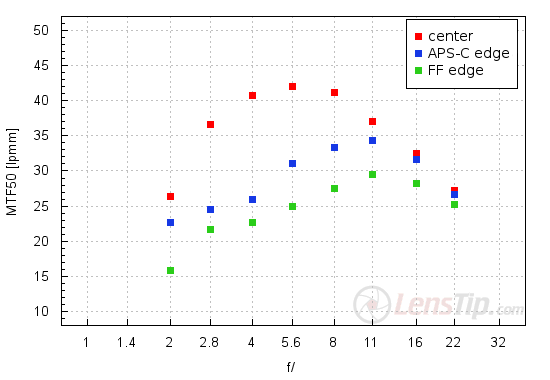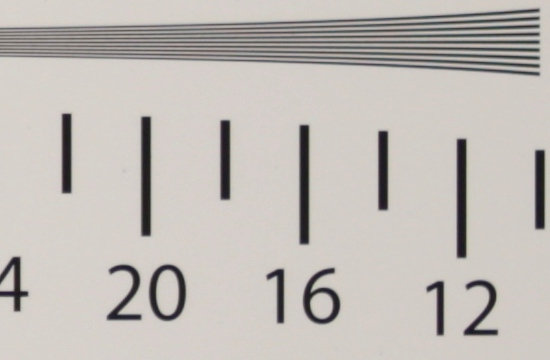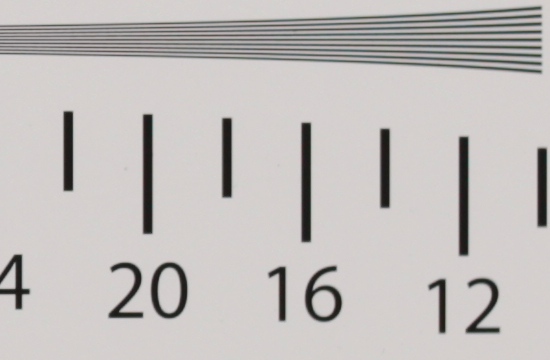Yongnuo YN 35 mm f/2.0
4. Image resolution
Let’s check how the tested instrument compares here. The performance in the frame centre, on the edge of the APS-C sensor and on the edge of full frame, depending on aperture values, presentes the image below.

Please Support UsIf you enjoy our reviews and articles, and you want us to continue our work please, support our website by donating through PayPal. The funds are going to be used for paying our editorial team, renting servers, and equipping our testing studio; only that way we will be able to continue providing you interesting content for free. |
- - - - - - - - - - - - - - - - - - - - - - - - - - - - - - - - - - - - - - - - - - - - - - - -
When it comes to the centre of the frame it can be clearly seen that at the maximum relative aperture you can’t speak about full usefulness of the image. Fortunately its quality improves very quickly on stopping down the aperture; by employing f/2.2-2.5 you can make the image fully acceptable and by f/2.8 their quality is already good.
The lens doesn’t break any resolution records because its MTFs were near f/5.6 as high as 42 lpmm and it was actually the lens’s maximum resolution value. It is a very good result but hardly sensational. New constructions such as the Canon EF 35 mm f/2 IS USM can provide sharp images already by f/2.0 and their maximum achievements brush against 46 lpmm.
As the performance in the frame centre can be praised, the edge of the frame is a real Achilles heel of the Yongnuo YN 35 mm f/2.0. Already on a small APS-C sensor you have to close the lens down to f/5.6 in order to get useful images. On full frame the results are simply tragically weak. At the maximum relative aperture the MTFs barely exceed 15 lpmm and the highest possible result can be achieved by f/11; still even there the lens cannot go higher than 30 lpmm.
Additionally near the maximum relative aperture you can notice a slight sharpness difference between the left and the right side of the frame. It is not a very pronounced effect, masked a bit by astigmatism and other off-axis aberrations (for example horizontal MTFs on the left and on the right don’t differ from each other almost at all, a distinct difference being only visible when you check vertical MTFs) but worth your notice.
At the end of this chapter traditionally we present crops taken from photos of our resolution testing chart; they were taken from JPEG files saved along with RAW files we used for the analysis above.
| Canon 5D Mk III, JPEG, f/2.0 |
 |
| Canon 5D Mk III, JPEG, f/4.0 |
 |






